
Portability
Consider price, logistics and design when choosing essential equipment for your portable church.

Choosing equipment for a portable church is significantly different than choosing equipment for a permanent church building.
There are many factors to take into account when choosing equipment specific to a rented space. And if a church doesn’t take into account the unique challenges related to equipping these kinds of spaces, it will be difficult on both the leaders and volunteers. What might seem like a savings up front will actually cost more in the long run.
What’s so unique about portable spaces? What are the competing values that impact your portable church equipment selection?
Here are three factors that make portable equipment different from permanent.

3 Essential Equipment Considerations For Your Portable Church
1. System Design & Integration
In a typical portable church, the venue and setup stay the same each week. This site consistency allows for some innovative opportunities in the design, selection and storage of the overall system.
INNOVATIVE EXAMPLES
For instance, in a large church that meets in a school, we were able to capitalize on the existing layout. The children’s ministry gathers in one large area with its own entrance, and we designed a kid-friendly archway to welcome the kids, custom-fitted to the facility. In addition, we printed a custom scuba wall for the children’s ministry area.
Another church conducts weekly worship in a rented auditorium. You almost have to see it to believe it, but the church is able to set up trusses, programmable lights, multiple screens, live video streaming, in-house Wi-Fi, and a sophisticated sound system – all done with volunteers in just over an hour!
When you work with professional designers to create equipment solutions for your portable church, you’ll end up with the best equipment to turn a rented venue into an excellent worship experience.
More solutions: 5 Ways Flexible Space Will Solve Your Space Issues

2. Logistics
Although some venues allow churches to permanently install audio/video/lighting (AVL) equipment in the auditorium or allow the church to store its equipment on site, that is the exception. Typically, portable church plant equipment has to be taken in and out of the facility each week.
Moving gear in and out of the venue means that logistics are a critical component to your church plant. To explain, let’s take the universal example of choosing the right chairs for your portable church.
CHAIR SOLUTIONS
We’ve seen a church dedicate an entire trailer to their seating solution. These chairs, which happened to stack and store inefficiently, still had to be transported and carried in every week by volunteers.
If the team had been willing to invest in a slightly more expensive seating solution, the logistics would have been very different. In that case, the chairs could have been stored with other equipment on another trailer, which would have saved the church thousands of dollars – not to mention the volunteer manpower it would have saved.
Read more: Principles of Portability – #2 Measure Cubic Volume
3. Economics
Choosing gear based on a balanced solution can save thousands of dollars a year in rental costs.
Unfortunately, one of the largest errors in essential equipment selection is overlooking the importance of safe, proper storage of the equipment.
Whether you purchase one of our solutions or any other, we can’t emphasize enough the importance of a balanced solution. We’ve seen it all:
- A church buys high-quality equipment but doesn’t invest in durable cases
- Teams go the DIY route and find that week after week, year after year, the color and quality of the gear doesn’t hold up
- A portable church has to replace electronics after a short time because the equipment was stored loose and without the proper protection
While purchasing essential equipment can be a large upfront investment, steward your investment well by also acquiring the proper cases and storage solutions.

LEARN FROM OTHERS
There you have it. Our designers and engineers have worked with thousands of church plants and multi-site churches over the years, and we see these three areas as the most important considerations when choosing the essential equipment for your portable church: system design, logistics and economics.
Here’s the good news: you don’t have to be an expert. We’re here to help. Engaging portability experts early in the process can lower total costs while maximizing the overall worship and volunteer experience. In the meantime, you might find some solutions on our store or in our innovation solutions section on our website.
Book a call with us and we can share more about essential solutions and portability best practices.
What considerations were important to you when you went portable? Share with us your experience!

Volunteers

As a portable church plant, you are probably going to launch in a rented, secular space like a school, theater, or community center. Is that a blessing or a curse?
Do you see opportunities or limitations?
Sometimes we meet leaders who see the permanent facility as the ultimate goal and portability as the means to the end. To them, portability is a problem.
To others who have seen the fruit of portability – particularly as it relates to volunteers and creating community, they see it as an opportunity and a blessing.
The difference between a problem and an opportunity is what we do with it, not what we think the issue is to begin with.
Let’s explore five reasons a portable environment can have a positive impact on your church, particularly your volunteers.

5 Ways a Portable Environment Can Have a Positive Volunteer Impact
1. Creates a positive climate
Setting up and tearing down a portable church is a beautiful opportunity for spreading positivity.
With an army of invested individuals in the leaders’ presence, all on mission together, setup and teardown time is the perfect opportunity to celebrate their dedication and call attention to the results of their work.
For example, upon arrival on an early Sunday morning, read a thank-you note from a parent who is grateful for the loving volunteers in the kids’ ministry, or recount a story of a family who never thought they’d step foot in a church and yet have been happily attending for 6 months.
These praise reports will energize volunteers and give them yet another reason to celebrate their sacrifice and dedication.
Check out our before and after gallery to see what volunteers can do!
2. Creates community
In many churches, we’ve seen portable teams become a de facto men’s ministry.
With many men on setup and teardown teams, a community forms where men come to serve together and connect regularly.
A lot of pastors report they find men are more likely to attend church because they’ve been given jobs and a purpose and connections are a positive byproduct.
What churches find is that inviting men – even marginal attenders – into the volunteer army results in growth and transformation.
3. Builds vision
Who better to grasp the leadership’s vision of creating an inviting environment for everyone attending than the workers?
- If chairs are broken or in poor condition, it’s the setup team who will consider the visitor’s comfort and take action to remove or repair that equipment.
- When lobbies are muddy and uninviting, it’s the hospitality team who finds every way possible to remedy the situation and make it inviting to the visitors and attendees.
- If kids’ ministry supplies have been misplaced, the volunteers will be the first to run to a local store and grab what’s needed in the name of creating a fun and caring environment for the children.
Invested volunteers are a church’s best line of protection against letting things slide and forgetting about the mission and vision. They’re INVESTED.
4. Keeps leaders humble
Of course, a pastor knows he can’t physically set up and tear down alone. But the volunteers are, undoubtedly, the biggest asset of a portable church plant, and it only takes a moment to see why. In other words, it takes a village.
In fact, on their blog, Life.Church says it outright: Life.Church couldn’t operate without volunteers.
Taking good care of that village requires selflessness and planning on the part of the leaders. Instead of figuring it out as they go along or being so concerned with the budget that volunteers are inconvenienced, it’s critical to show appreciation and consideration for the volunteers.
In a previous article entitled Volunteers are Your Most Valuable Asset, we suggest that pastors open the door to feedback, even if it is humbling.
“We want to make sure your volunteers feel empowered – give them a feedback loop to share their insights and make sure Shepherding Methods are employed to encourage, affirm and uplift your volunteers. A little emotional care goes a long way in a portable environment!”
It might be easy to assume the group of workers is fine since they’re usually enthusiastic workers, but this feedback loop allows them to share their honest reflections from their time in the trenches.
More on volunteers: Empower Your Volunteers and Avoid Burnout

5. Normalizes service
Serving can have a contagious quality, especially if it’s viewed positively.
When a church launches with 50 dedicated, invested workers, there’s no doubt their impact will spread. The question becomes what are they spreading?
In other words, are the volunteers overworked and underappreciated and asked to maneuver and set up cumbersome equipment as part of a tedious system? Or have the workers been shown gratitude and respect – with plenty of thank-yous and the blessing of intuitive equipment that can be assembled quickly?
Happy volunteers who are experiencing purpose and community will recruit more volunteers who will experience purpose and community. Serving becomes part of the culture, along with all the benefits listed above.
Here’s how one pastor put it:
“We have more people engaged and involved than ever before, and the Setup and Teardown process has really been the catalyst for that.” Ryan Ezekiel King, River City Church
Visit our store for tested and approved portable equipment.
GRATITUDE FOR VOLUNTEERS
Though some leaders are initially intimidated by the need for an eager team of workers, we’ve seen time and time again how these groups become the backbone of a church’s congregation. They are the hub of community and positivity, they are forces on a mission, and they make service fun and approachable.
We’re thankful for the workers who make portable churches function well and for the pastors who’ve embraced the positive impact of these volunteers on their church community.

Church Planting
Need a reminder of the benefits of starting a new church? Stay inspired with this encouraging infographic.

With an estimated 350,000 churches in America, do you ever wonder why denominations and churches are investing time and money into starting new churches?
Aren’t there plenty already in existence?
While it’s true there are churches on many corners in our country, there’s more to the story.
IDENTIFYING THE NEED TO START NEW CHURCHES
According to a Lifeway Study, the trend is clear: far fewer churches are opening compared to the amount that has closed their doors. For example, in 2019, approximately 3,000 Protestant churches were started in the U.S., but 4,500 Protestant churches closed.
We need to plant more churches to bridge that gap.
But that’s not the only reason to start new churches. What about fulfilling The Great Commission?
“Then the eleven disciples went to Galilee, to the mountain where Jesus had told them to go. When they saw him, they worshiped him; but some doubted. Then Jesus came to them and said, ‘All authority in heaven and on earth has been given to me. Therefore go and make disciples of all nations, baptizing them in the name of the Father and of the Son and of the Holy Spirit, and teaching them to obey everything I have commanded you. And surely I am with you always, to the very end of the age.’” (Matthew 28:16-20)
It’s clear that we are instructed to GO and make disciples. While some have taken that to mean simply evangelizing, scholars like Tim Keller point out that’s not the case. Years ago, he stated:
“Virtually all of the great evangelistic challenges of the New Testament are basically calls to plant churches, not simply to share the faith. The Great Commission (Matt. 28:18–20) is a call not just to “make disciples” but to baptize. In Acts and elsewhere, it is clear that baptism means incorporation into a worshiping community with accountability and boundaries (cf. Acts 2:41–47). The only way to be truly sure you are increasing the number of Christians in a town is to increase the number of churches.”
In addition, notice there’s no qualifying statement here – we are simply to go and make disciples. Jesus doesn’t tell us to stop when we reach 300,000 or when we’ve run out of places to construct buildings. He simply gives us a mandate.
Best practices: 3 Things We Now Know About Church Planting Momentum
NEW CHURCHES MAKE GOOD SENSE
Thankfully, in the past few decades, starting new churches has become more attainable and feasible. This is the result of a combination of factors, including –
- Believers catching the vision of the importance of the local church
- Dissatisfaction with the ways of the older church model
- Can be more affordable than maintaining existing facilities
And let’s not forget the innovative creativity of those first churches who began in a portable setting, meeting in schools and community centers. They paved the way for boundless opportunities to start new churches!
While starting new certainly doesn’t solve every struggle the Church faces today, there are plenty of benefits. Church planting is tremendously labor-intensive, so these encouraging reminders can become a motivation to pastors and church planting teams.

5 Benefits of Starting a New Church
1. More affordable than renovating
Some churches are started out of practicality. With aging architecture, many churches find that starting a new church by renting a facility and purchasing portable equipment is far more affordable than renovating an existing building or purchasing brand new.
2. New churches are committed to growth
The folks who lead and attend a new church have growth in their bones. Here’s what we mean: Consider a church full of people who’ve attended for generations and raised their kids in that faith community. They want to see people come to faith but they also grieve that old, small church of decades ago.
Compare that to a handful of families who caught the vision to start a new church. Unlike an older congregation that might be focusing on other endeavors and forgotten about the mandate of growth, church plants know that growth is the strategy. There’s no surprise when the parking lot is overfull and the kidsmin rooms are bursting at the seams – everyone involved knew this was the hope, prayer, and plan.
3. Strong reputation for reaching unchurched
With little to no reputation and zero history, a church plant can start with the ultimate clean slate. It can be designed to reach a variety of socioeconomic groups and have success in doing so.
The “all are welcome” atmosphere is welcoming and inviting and typically attracts unchurched individuals faster than existing churches.
Inspire volunteers: The Secret to Excellence and Volunteer Retention in Portable Churches
4. It’s an act of obedience
Like we discussed above, “going” and making disciples are our instructions as believers. If an area doesn’t have a visible church building welcoming visitors, it’s an indication that someone hasn’t yet answered the call.
Dave Early in an article at Church Plants said it well:
“Any Great Commission initiative that does not result in the forming of new churches misses the mark.”
5. Creates a culture of community
New churches go through a season (or lifetime!) of portability and flexibility, which means gathering teams of volunteers and training up leaders to carry out the mission.
When you consider starting a children’s ministry from scratch or creating an environment that appeals to all ages, the burden is heavy. Thankfully, it’s a weight that is shared and out of it is born a culture of service and community.
The individuals who are choosing to serve and worship at a new church are on the ground level celebrating a culture of service to the mission, to one another, and to the transformation that comes along with it.
We like the way Pastor Tim Gephart of Reunion Campus at Plainfield Christian Church compared his new church’s physical transformation to the redemption of believers:
“The campus starts as a middle school and becomes the gathering place for a community of believers. There’s something beautiful about watching a building be transformed by a group of people who have themselves been transformed by the love of a Savior.”
People who’ve been in the trenches starting new churches can talk extensively about the benefits of being portable and the need that creates for recruiting and honoring volunteers.

ENCOURAGEMENT FOR CHURCH PLANTING TEAMS
Many leaders and pastors have put their thoughts to pen and shared their understanding of church planting to be a natural and expected part of the faith. We’ve collected a handful of them and created an infographic with their quotes about the importance of planting churches.
If you know a church planter or someone on a church planting team, send them this link and they can view and print the poster for free. Church planting isn’t for the faint of heart and this encouraging gesture will make a big impact.

Church Planting
Download available: Keep your church plant launch team on track with a thorough 12-month checklist.

Planting churches is an adventure. In addition to the excitement, it’s also a bit daunting. For the majority of those involved, it will be the largest project they’ll ever be a part of!
Most people don’t consider the details of church plant launches. Things like:
- Applying for sales tax exemption
- Incorporating in state
- Registering State Department of Revenue
- Securing a PO Box
- And so much more!
As a leader of a plant or a member of the church plant launch team, you’re probably already aware of the long list of to-dos. But are you confident you’ve got the right tasks on your list – and at the right time? We’re here to help.

PACING YOURSELF WITH A CHECKLIST
Following a checklist will help church planters to pace themselves. Yes, it’s true – most planters we’ve met have no desire to be “paced” and would happily complete this list in a month. But there’s a purpose and a blessing to following a proven timeline, and we might suggest that it’s a good lesson in what’s to come.
We like what one pastor at Acts 29 had to say about pacing himself in ministry as he reflected a few years post-launch:
“It’s better to walk slowly at a healthy pace than to sprint at an unhealthy pace.”
We’ve created a checklist to help you keep a healthy and productive pace, and to ease some of the stress and confusion.
Through a collaboration with Jason Laird of Sozo Church, we’ve compiled your to-do list for starting a new church plant that can help your team gauge progress and stay on track.
We’ve divided the areas into the following timeframes:
- 12 Months Prior: Fuel Up
- 6 Months Prior: Rollout
- 3 Months Prior: All Systems Go
- Launch: Here We Go!
Let’s start by introducing the categories that need addressing from the earliest point, highlighting the areas that you should be giving yourself at least 12 months to complete.
14 Areas To Consider One Year Before Your Church Plant Launch
1. Establish the Vision
In addition to the exciting tasks like choosing a name, location, and launch date, your launch team will need to write a vision and mission statement.
Among other needed items, it’s critical to select a Financial Board of Overseers to help set you on the right course.
2. Join a Church Planting Group
The reciprocal benefits from securing a sponsoring church are widespread and highly encouraged. Not only does a church plant gain wisdom and enjoy professional mentorship from the sponsoring church’s leaders, but the “mother church” also reaps great benefits. Imagine the contagious joy when the Launch Team reports back to the sponsoring church with details of new believers and enthusiastic disciples. The joy of God is infectious!
Similarly, establishing a church planting group or joining a denomination is a wise choice that establishes credibility, security, and a solid foundation.
3. Begin Promotions
Grab a marketing guru and start branding. Establish corporate identity, develop a logo, business papers, and cards.
Pro Tip: Document! Take photos and videos of the development process as much as possible.
4. Make the City a “Home”

In the year before launch, it’s time for the lead pastor to get settled in to establish relationships, start prayerfully walking the city, and connecting with prayer partners.
5. Get Legal
In the year before your church plant launch, get squared away with state, legal, and corporate actions, like applying for tax exemption.
6. Set Up Church Administration
Every successful team has an organizer on board. Elicit their help as you secure interoffice communication for the leaders, as well as turn your Ministry Development Plan into a massive checklist for each area.
7. Develop Launch Team
If your launch team isn’t already secured, it’s time to dream big. Invite others to move into the “plant” town and/or commit to attending, serving, and leading. Cultivating this team will include weekly vision meetings for connection, planning, and leadership. These gatherings are precious, productive time and their importance cannot be overemphasized.
8. Learn & Network
Soak it in! Attend conferences, visit a variety of different churches and take notes on why they’ve made the choices they have for their church, and also what is and isn’t working very well for their congregation.
9. Raise Funds
This season of fundraising includes sending out support letters and creating “vision” materials for easy communication. Carefully develop the pitch and ask, and use it every chance you get – when you meet someone interested and curious about your church plant, or use it when approaching church groups or organizations to request support.
Inspiration & Encouragement: Top 10 Podcasts for Church Planters
10. Begin Marketing
Time to start checking off all the electronic marketing tasks that are necessary for this day and age:
- Purchase a domain name
- Write website content for main pages
- Get your site designed and developed
- Create blog posts and social media accounts
Pro Tip: Establish your church’s hashtag and start using it right away as your team shares content to social media.
11. Secure Financials
Once you hire an accountant, they can help to set up the income and expenses spreadsheet, open the checking account, and set up office files specific to your church plant launch.
12. Prepare Children’s Ministry
Long before the craft stations and fun classroom areas are designed, curriculum needs to be purchased, forms need to be developed, and a registration system needs to be secured. Do you have a team gathered to make progress in this area?
Get your questions answered: 6 Smart Portable Church Equipment Questions to Clarify Your Game Plan
13. Determine Leadership Procedures

This list of items could easily go undone, but it will keep your church running smoothly post-launch and set you up with scalable systems. For instance, create service forms, connection cards, ministry reports, and expenditure requests, among others.
14. Complete Federal, Legal & Corporate Actions
The tasks in this category are lengthy and involved and might require assistance beyond the launch team, so plan accordingly.
Just a few of the tasks include developing a corporate records kit, obtaining an EIN, crafting the constitution and bylaws, and appointing leadership roles. For the exhaustive list, download the entire checklist on our website.
Learn from others: These 7 Church Planting Mistakes Can Really Cost You
EVERY STEP TO YOUR CHURCH PLANT LAUNCH
If you’ve started to check off these items at the one-year point, you’re in great shape! But as you well know, this is not the end.
There are just as many tasks during the Rollout Stage (networking, promotions, location, etc.) and the All Systems Go Stage (service planning, in-house communication, first message series, children’s ministry rollout, etc.). For instance, when’s the best time to perform a test run of your church set-up and tear-down, and the optimal time to recruit your army of volunteers?
What have we missed? Are there other tasks you’d suggest church planters begin at the 12-month point? Drop a comment and share your experience.

Facility
Before signing your rental agreement, ask these deal-changing questions.

Church isn’t about your building, but your building can help or hinder your ministry.
Don’t be caught off guard after you’ve committed to a church plant location. Learn from those who’ve gone before you and make sure to ask these questions before you sign on the dotted line.
3 Questions Church Planters Say They Forgot To Ask
1. Do you require gymnasium floor covers?

Think of the investment a school or community center makes when they install a gymnasium floor. Wood flooring gyms cost $13 per square foot, not to mention the investment they made having it installed!
It’s no wonder that some facility managers ask renters to provide a floor cover system to protect their gymnasium flooring.
Choices include covers, tarps, tiles, and more, with varying prices. When you configure your budget, make sure to include the cost of storage racks for your chosen solution. These impressive solutions can be an investment. Along those same lines, come to an agreement with your landlord about the storage of the cover system — do you need to transport it to the facility weekly, or can you store it there?
The point is, there are solutions. The requirement of a floor covering doesn’t have to be a deal-breaker — you just have to make sure it’s not a budget breaker.
This free ebook contains venue ideas we don’t see on other lists. Check it out.
2. Do I need to bring my own chairs?

Since your potential landlord knows you’re renting the facility to temporarily seat hundreds of people at one time this question might seem redundant, but it’s not.
Ask whether or not you can use their chairs, which of course you’d expect to pay for as part of your rental agreement for your church plant.
But, since some landlords will prefer to reduce the wear and tear on their equipment and decline the request, it’s important to determine if chair rentals or purchases are in your budget.
Two options:
- Are there rental companies in your area to provide chairs on a weekly basis? Although the cost of renting exceeds the cost of purchasing, consider the long-term storage and manpower costs, too.
Pro tip: Negotiate a deal with the rental company. It’s quite likely they’ll offer you a discount since you’d be a committed, weekly customer.
- Chairs for purchase differ greatly in quality and price. Read reviews, get online and ask other church planters, and be sure to purchase a “trial” chair. (Be sure to test it accurately by sitting in it for the same amount of time your attendees sit every week to give it an honest review!)
Again, it’s not an unsolvable obstacle. It’s just one that takes consideration and possibly a different portion out of your budget.
Learn the factors that led one church to purchase higher-priced chairs for their church plant.
3. Are there blackout dates for the facility?

This seems obvious, but sometimes the most obvious questions get overlooked.
It’s not unusual for a school to schedule maintenance or flooring repairs during the summer months which would close the facility for a week or two. Or a local community center might host an annual weekend tournament that turns your Sunday facility into a temporary cafeteria. Make sure you get these dates far enough in advance that you can plan for alternate meeting locations.
INNOVATIVE VENUE OPTIONS
Have some fun with your blackout dates! Here are some creative ideas we’ve seen other churches choose:
- Hold an outdoor worship service. Reserve the pavilion at a local park and gather together during seasons of favorable weather. Meeting in a casual, public space makes inviting friends and family especially easy, too.
- Plan a church activity in place of your worship service. Host a church picnic or camping day, encouraging everyone to gather casually with the hopes of building connections. Don’t worry about the food — just reserve a food truck to bring it to you.
- Of course, renting an alternate facility is an option, but make it your own by putting a positive spin on it! If you decide upon reserving the local arts center, use the opportunity to showcase your church’s creative side and artistic members. Or if you end up in a local college gymnasium, bring sports equipment and encourage families to stick around for some playtime after the worship service.
In a nutshell, use your “new” location to your advantage.
And speaking of advantages, here’s one more: If your church runs multiple services, these options can be especially appealing since they’ll give your attendees and members the unique opportunity to gather at one time, in one sitting. If your church culture allows, consider this a “family” service and invite the kids into the worship service along with the adults.
Need flexibility? 5 Ways Flexible Space Will Solve Your Space Issues
Almost every obstacle you face upon securing a rental agreement is solvable. Whether it’s gym floor coverings, chair options, or blackout dates, you and your team are likely to find solutions that make your decision clear-cut.
And when it’s not, we’re here to help. We’ve worked with hundreds of leaders to find solutions for their varying equipment needs.
Next, grab a copy of our ebook, How to Choose the Right Facility to help you pick a venue that works with your vision, not against it.
What questions have you missed? Will you leave a comment and share?

Church Planting
Choosing your church plant location isn’t just about capacity. Consider these 5 important factors.

As you’ve likely encountered, there are endless factors to consider when choosing a location for your church plant or multi-site project. From questions about the HVAC to negotiating rental details, it’s easy to get caught up in the details and overlook the basics.
That’s why we’re encouraging you to take a step back and start with the non-negotiable elements of your church plant location. Here are the ones to check off your list first.
6 Smart Considerations When Choosing a Church Plant Location
1. The target group

According to Lifeway Research’s coverage of New Church’s “The State of Church Planting in the US”, did you know:
84% of church planters feel a definite calling from the Lord to the geographic area where their new church is located
Planting teams are aware of their target group and, sometimes, that predetermines a church planting location. Other times, it might be flexible. Church planters know each region has a culture and that location matters. In some towns, crossing “the tracks” to head to church in another area of the neighborhood might be too big of a friction point for visitors. In other cities, two sister regions might consider themselves interchangeable.
And although location might be crucial, inventory might be obsolete.
In that case, consider every location within the planting team’s envisioned area, focusing only on the non-negotiables like capacity and safety. If there aren’t adequate options, move on to closely-located options that also fit the bill.
Prepare by determining how big of an issue location is for your planting pastor, team, and target group.
Adaptable solutions: 5 Ways Flexible Space Will Solve Your Space Issues
2. A good vibe

What’s the overall atmosphere of the facility?
Did you know surveys show that visitors make up their minds about a return visit within 7 minutes of arriving at your facility? That’s long before they’ve heard the worship band or pastor.
When it comes to welcoming visitors or first-time guests, the importance of the tone coming from the parking lot, entrance, and lobby cannot be overstated enough.
SURROUNDINGS
Consider the long list of potential locations and how those venues might impact the vibe. Is the entrance off-putting and dark? Is the parking lot in horrible condition?
On the other hand, envision the welcoming atmosphere that can be created with the right treatments and equipment.
- Church in a local roller rink? Consider bringing in some air fresheners to combat the familiar roller rink odor. Take advantage of some of the fun elements like the disco ball and glow lights when it makes sense. Utilize backdrops and great signage to guide the first-time visitors’ path to worship, children’s ministry, and restrooms
- Worship gatherings in a hotel? Liven up the atmosphere of drab conference rooms with colorful flooring and dividers for kids. Open up the window coverings to let more natural light into the welcome areas. Plant people around the entirety of the hotel area to greet and guide visitors to the church lobby, worship center, and children’s drop-off (large hotels can be overwhelming to some!).
- Taking over a warehouse on Sundays? Bring in elements that make an empty warehouse feel homey — like plants, lighting, and lobby TV’s. If the ceilings are particularly high, you may even want to consider portable heaters for the colder times of year. Set up hospitality stations in the restrooms to bring a little more cheer.
HOSPITALITY
More valuable than any amount of equipment are friendly faces who have compassion for the possible discomfort of a visitor.
Greeters and attendants can be trained to assess the comfort level of the guest and respond accordingly. If they have children, make sure they are aware of the kids’ ministry options. Do they appear to need assistance? Kindly offer a wheelchair or help them to an easily accessible seat in the worship center.
Pro tip: While it’s critical to use signage to ensure all areas are easy to find, it’s equally important to strategically position people to answer visitors’ questions.
3. Great visuals and sound

The list of equipment is generally uniform whether or not you’re in a permanent facility or portable environment. The difference is that you’ll select your tech based on the church plant location’s size and shape to ensure coverage and visibility.
In a nutshell, you’ll need a custom combination of:
- Speakers with the right coverage patterns and dispersion
- Projectors sized correctly, based on screen size and lighting control
- Screens viewable from anywhere in the room
- Wireless microphones
- Wires, wires, and more wires to connect everything
Of course, each piece needs to be portable. You’d be amazed at what a great case can accommodate safely.
We’ve got you covered. Get your tech questions answered when you schedule a zero-pressure call with one of our experts.
4. Fun kids’ area

The same way a tidy doctors’ office waiting room brings comfort and security, so does your children’s ministry area.
Parents are handing over their most important people to your care, and it takes just a little extra effort to make it clear that kids will be safe, secure, and happy while they’re visiting.
It doesn’t take a school gymnasium to create that atmosphere, it just requires some creativity and the right gear.
For example, are you considering a movie theater for your church plant location? Take over the lobby, the hallway, or even an adjacent party room. When you brighten the lights, drape colorful curtains to frame the space, and set up inviting equipment for kids to climb or sit on, you’ve transformed your space.
Fun kids’ space: How to Accommodate – and Engage – Kids in a Portable Church Venue
5. Intuitive parking

Is the parking lot adequate and intuitive? Two things to consider: space and signage.
Will visitors know exactly where to park? And is there enough space for them, considering nobody wants to think they’re stealing the last spot. Make sure you’ve accounted for a bit of extra space or consider erecting a portable “Visitor Parking” sign in a few up-front spaces.
When determining the space needed, consider an average of 1.7 adults per car.. Of course, volunteers can be asked to park off-site or carpool which will free up spots.
To solve their parking problems, one Michigan church built a relationship with a nearby university that allowed them to use their campus parking on Sunday mornings. Parking limitations don’t have to be a deal-breaker, but they might require creativity.
Parking tips: Church Launch Must-Haves | Parking or Easy Access
6. Clear signage

Although this can element can be adapted no matter your choice of church plant location, it’s important to start thinking in this direction (pun intended).
Direct, informative signage not only gets people where they need to be but is also a chance to make a big impression. Of course, in temporary or rented facilities this can be a challenge. Some of the facility’s permanent signs might need coverage to avoid confusion and reduce barriers; other signs will need coverage with your wayfinding signs.
STAND OUT
Here’s the rule we share with our clients: When a visitor is standing at one of your signs, there should be at least one other sign of yours in view. For instance, when a visitor exits the bathroom facilities, the way back to the worship center, lobby, or kids’ ministry area should be obvious.
Pro tip: Although it’s no secret your church plant location is a borrowed facility, you’re aiming for enough of your branding that people walk in and forget that it’s not yours.
Don’t get lost in the details. Start with this list of smart elements to consider when you’re selecting your church plant location and then work with staff and committees to iron out some of the other elements.
Once you combine a suitable facility with a good vibe, great children’s space, adequate parking, and powerful audiovisuals with passionate volunteers and leaders, you’re well on your way to a strong launch.
Get more tips on choosing and assessing your location and our list of essential equipment considerations with our free eBook.
What are your non-negotiables? Drop a comment below and share with us.

Free Resources
Leaders, get inspired with these podcasts for church planters.

People learn and are inspired in a variety of different ways. One of those ways are podcasts. Podcasts are very popular today as they are really helpful for people on the go which makes them great, especially for Church Planters.
Church Planters are constantly on the go as they are preparing to launch their Church. And while there are plenty of opportunities for them to learn and grow in their leadership, taking time to sit down and read a book or watch a video to learn may be hard. That is why podcasts can be so helpful. They can listen and learn while in the car, waiting before a meeting or walking.
While there are plenty of Christian leadership podcast, Church Planter focused podcasts are not as common, especially up to date podcasts (consistency is important). So, we have combed through the variety of different podcasts out there to highlight 10 of the best podcasts for Church Planters to listen to and learn from. Here they are in no particular order.
1. The Church Planting Podcast

Started in 2016 and hosted by Clint Clifton and Colby Garman this is a weekly, interview based podcast. It is intended to help church planters and sending churches aspiring to make more disciples through church planting.
2. Churches Planting Churches

This podcast is produced by Acts 29 in partnership with The Gospel Coalition. Tony Merida talks with various church planters, pastors, theologians, and innovators; sharing stories and insights to help you serve Christ’s church more faithfully and effectively.
3. Launch: The GCC Podcast

Started during the beginning of the coronavirus pandemic, this is a relative newcomer to the church planting podcast field. It is hosted by Dave Harvey and Marty Duren of the Great Commission Collective. They have conversations with guests focusing primarily on church planting and soul care for all pastors.
4. New Churches Podcast

This podcast offers practical answers to your Church planting and ministry questions. They help ministry leaders by looking at real situations answering questions and dealing with ministry related issues. This podcast is hosted by a variety of hosts such as Daniel Im and Ed Stetzer and is put on by the Send Network and is updated once a week with new episodes.
5. Plant Strong Podcast

Hosted by Lisa Bennett, this podcast features women and men who are serving and leading in diverse ministry contexts, champion women in Church Planting. You will hear stories from leadership veterans to women in the beginning years of church planting. Each episode will encourage you no matter where you are at in the church planting process. Episodes are updated about every 2 weeks.
6. Unfiltered: Real Church Planting Conversations

In this podcast you’ll experience authentic discussions about real issues that church planters face and how to deal with them. Hosts Lee Stephenson and Danny Parmelee are two experienced church planters who discuss these issues and talk about the topics you don’t hear about much when it comes to church planting.
7. Practical Church Planting

This podcast gives you practical tips, advice and encouragement for planting and growing healthy churches. No matter where you are in the church planting process, you will find this podcast very helpful. Brian Androsian and Dylan Dodson from New City Church host this podcast.
8. Church Plant Chat

The Church Planting podcast is centered around UK based Church Planters and Leaders sharing about their experiences with Church Planting and leadership; equipping emerging leaders/planters with wisdom from those who have gone before them with lessons they’ve learnt along the way!
9. 5 Points Church Planting Podcast

This podcast focuses on Reformed and Presbyterian Church backgrounds. Hosted by Dr. Hunter Brewer and Rev. Josh Kines, their goal is to give one good point per episode regarding Church planting. Each episode is around 30 minutes long.
10. The Rise and Fall of Mars Hill

While this is not a specific Church Planting podcast, host Mike Cosper takes you through the rise and fall of Mars Hill. From its founding as part of one of the largest church planting movement to the end, this podcast will help any Church Planter avoid the pitfalls a leader can encounter and go through.
Whether you are interested in planting a church, are in the process of planting a church, or just want to learn more about building healthy churches, these 10 podcasts are great ones to follow and listen to.
Which ones do you listen to? Did we miss any great ones out there? Share and let us know.

Facility
Flexible space in your church will increase opportunities to serve and gather.

We’ve talked to too many pastors and leaders who are paralyzed by the options and decisions surrounding space issues for their church facility.
One church acquired a commercial facility and did basic adaptations to make it suitable for the church’s vision and mission. It was useful and convenient and fit the vision. But for the leadership team, deciding on “next steps” posed challenges.
Since the church was positioned for growth and — at the same time — had to maintain social distance, the thought of making decisions regarding permanent classrooms, children’s areas, connection areas, and worship space was overwhelming.
A NEW TYPE OF CONSTRUCTION
What the leaders of that church didn’t realize is that flexible options exist. What they decide in the “next steps” can work today and also be adapted for great purposes tomorrow.
Gone are the days of constructing a building or renovating a space and then revolving ministry goals around that brick and mortar building. Although you want to create your space with the long-term in mind, you don’t need to be tied to a design just because it worked twenty years ago.
What if you need a larger worship center?
Or more rooms for kids’ ministry?
Are you forever committed to your (or someone else’s) design?
There are innovative design solutions used every day that can help you reduce your construction costs and maximize your ministry’s impact and vision.
Whether your church needs more space to accommodate social distancing or to accommodate an influx of attendees, there are flexible options available for your permanent space that will help you achieve your goals.
Here’s how those options will benefit your church and your community.
5 Ways Flexible Space Will Benefit Your Church
1. Transform Your Space

Flexible solutions can quickly transform your space based on current need — and by current we mean this year, this week, or this minute’s need.
For example, imagine a newly renovated lobby area that was designed with a visitor’s first impression in mind. Between the Welcome Center, great signage, and the inviting coffee bar, your Sunday morning guest has everything they need.
But what about the group of men who want to meet for Bible study on a Tuesday morning? Instead of asking the study attendees to walk to the back of the building to sit in the kids’ classroom, make use of that spacious lobby with flexible, adaptable solutions.
Some churches prefer an affordable, predesigned box system. Learn more.
2. Maximizes Smaller Footprint

More space does not equal more ministry. We’ve seen churches save money and energy by maintaining their smaller — more affordable — build but unlocking more space with adaptable, flexible choices.
In other words, having a flexible system allows you to save on the up-front cost of acquiring or building a larger church, and yet maintain options for accommodating large numbers of attendees.
3. Changes With The Times

Whether there is a pandemic or not, a strategically-led church is unlikely to be doing ministry in the same way it was 15 or even 3 years ago. Don’t let your future ministry innovation be held hostage by the structure you chose today.
In addition, different leaders might envision space usage differently. Though we hope a leader doesn’t design the layout based entirely on personal preference, it does happen. Out of the gate, a flexible design will allow changes to be easily made when the need arises.
4. Makes The World Your Space

With flexible options for sound and visual equipment, the team can pick up and go anywhere to conduct a worship service, present a concert, or oversee a community event.
Want to commemorate a day in your community by having a worship service at a local park? No need to ditch the music and ask your pastor to yell. Just bring your flexible AVL equipment.
The days of “build it and they will come” are now non-existent. All churches need to think outside of their walls, and building with flexible space in mind sets you up to make that happen.
Need to improve or simplify your system? Learn about upgrades.
5. Serve The Community

With an adaptable space, you can open up your facility for community purposes.
Consider the diverse groups and needs within your community like schools, civic organizations, and clubs. With minimal effort, your flexible space can adapt to provide them two things — first, a meeting space for their group, and second, an introduction to you and your team.
Environments that transform will attract different cultures, interests, and people with varying needs.
And as a bonus, your church can use this option as a revenue stream.
Think about this — for a nominal fee and limited effort you can rent portions of your facility to outside groups. The benefit is twofold because again, it gives you access to individuals who might otherwise never step into your church, and it also generates income for your church.
FLEXSPACE DESIGNS
While there’s a lot to learn about construction and engineering, it’s important to have a team around you who can craft flexible designs that fit your church’s story and vision. With flexible space options, your church’s dream can be brought to life.
We’d love to help.
At PCI, our FlexSpace Designs do exactly what we touched on here — they provide a more effective use of space and place, and make it simple for churches to be more community-centric.
Here’s what a recent church leader said about PCI’s Flexible Solutions:
“Flex Space is allowing us to easily redefine our spaces and respond to the needs…even outside these 4 walls.”
Is your church on the fence about doing a build out, construction project, or portable environment? It’s easy and free to contact one of our experts who can answer your questions and give you unique ideas to improve and maximize your space.
Here’s a convenient checklist of things to avoid in your next building project. You’ll also find solutions and ideas used by real churches like yours in our resource: 6 Mistakes To Avoid In Your Next Church Build Out.
How have you adapted your space and made it serve more than one purpose? Drop a comment and share your experience.

Portable Church Systems
Cubic volume, weight, and assembly make a difference in portable church equipment.

Church leaders wear a lot of hats. Let’s not add the role of portable church equipment master to the list.
And yet, if you’re ready to create a portable environment, you need a game plan for your equipment solutions. Whether you’re planting a church, launching a new campus, selling a too-small facility, or shifting to another building after the pandemic impact, you need smart, fast, trusted ways to build your unique, portable solution.
Whatever the reason, your vision is to reach more people with the message of Jesus, and you know that LED boards, folding chairs, and trailers are the means to the end.
Portability is one of the most cost-effective ways to expand or plant and it creates ideal circumstances for development and outreach. Are you ready to turn temporary venues into powerful environments and compelling experiences every week?
PORTABLE CHURCH EQUIPMENT CONSIDERATIONS
The list of considerations when becoming a portable church is robust and — for many — intimidating. We talk to church leaders every day who tell us they just “didn’t know” what they didn’t know.
Today is the moment you get in the “know.” When you work through our six critical questions, you’ll have the information you need to make wise decisions regarding your game plan for portable church equipment.
Cutting through the noise will get you and your team closer to achieving your goal of reaching people and expanding the Kingdom in your community — both within your walls and outside of your rented facility.
The key is to go portable wisely.
These questions will help.
6 Portable Church Equipment Questions To Clarify Your Game Plan
Question #1: What’s Your Weight Limit?

Does that question give you images of a UHaul pulling an RV?
While churches do need to consider trailer load limits, we’re thinking more in terms of the weight limit for your volunteers.
Basically, you need to make sure the weight of your gear is something an average person can set up and use.
First, choosing lightweight, safe equipment demonstrates that you’ll go above and above to look after volunteers, the men and women who will be setting up and breaking down your equipment weekly. It communicates that you value their service.
Second, you want to avoid injuries at all costs! Not everyone on your team is a CrossFit phenom.
As for the trailer load limit, churches are always amazed at how quickly the gear weight adds up. For example, consider trailer weight and gear cases when calculating max.
In this related article, learn more about weight limit and find questions to drive your choices.
Question #2: What is Your Cubic Volume Limit?

When building out or church planting, don’t make the mistake of so many that have come before you and hyperfocus on economics while overlooking the practicality and usability of the equipment.
Steward your finances wisely, but choose gear that is safe, efficient, professional, and easy to use.
For example, one church we assisted struggled with the decision to purchase less expensive chairs that looked just as nice as the higher-priced ones that were just slightly larger.
After doing some projections, it was clear that spending extra on the higher-priced chairs would be cheaper in the long run when you compare the cost to two other factors:
- Extra storage space would need to be rented for the larger (but cheaper) chairs
- Additional trailer trips from storage to the facility to accommodate the increased cubic footage.
Once the numbers were run, the decision was simple.
The reality is that your values when choosing portable church equipment will likely differ from your values in a permanent space.
Work through a sample space-to-cost ratio in this article and learn more about cubic volume.
Question #3: Is the gear easy to use?

Imagine transporting, moving, setting up, and tearing down the same set of equipment every week.
Now, consider doing the same actions with the same equipment in 6 inches of snow or on a 116* day.
The highest principle to consider when choosing portable equipment is the ease of use for your set-up team.
You might find a great backdrop, but the grommets are constantly popping out. One Sunday, you notice your team members giving each other the side-eye and avoiding the job of hanging that piece. Was it worth the cost and likeability factor?
Here’s the ultimate Pro Tip:
Everything benefits from having an efficient system — from morale to the bottom line to potential church plants or campuses for your new church.
Learn how to avoid highly complex systems and get more tips for functional equipment.
Retain your team: The Secret to Excellence and Volunteer Retention in Portable Churches
Question #4: Is The System Reproducible?

Since most church plants or new campuses will be in a rented facility like a school or community center, your process must be reproducible. Can this entire process be done again and again and again?
Will the equipment move and pack quickly, install easily, and tolerate the weekly wear and tear? If so, then you have a reproducible system. This goes for everything from the nursery gates to the AVL equipment.
Furthermore, you are set up for a strong return on your investment since this will mean minimal damage to your equipment, reduced man-hours, and — bonus — happier volunteers. Talk about a win-win!
TWO MORE QUESTIONS TO DRIVE YOUR PLAN
In the last questions driving your game plan for portable church equipment, you’ll explore ways to break down barriers for first-time guests based on our decades of experience and the “do” and “don’t” testimonials from thousands of churches who have walked this road.
Also, you’ll uncover innovative ways to empower volunteers for the church’s mission. It’s an amazing sight to behold when a team of volunteers is enthusiastic about their 5:30 AM wakeup because they understand the bigger picture. We can help you cast that vision when you work through Question #6.
To dive into those last two considerations, head to our resource page and download (totally free!) our e-book. The e-book will give you a one-stop-shop for the 6 principles to consider when choosing portable church equipment and help you decide which values to prioritize as you create your game plan.
What did we miss? What questions have helped you drive your efforts for going portable?

Church Launch, Mobile Churches, Multisite, Volunteers

The church multisite trends are clear: growth through multiple smaller venues, financial stewardship through leasing, and reaching people in their neighborhoods.1 Yet, churches are leaving traditional facilities in favor of rented spaces that still provide for:
- Excellent environments for worship, children’s ministry, and community.
- A culture that matches the DNA of their main campus.
- Engaged, highly productive and happy volunteers.
There are two common mistakes churches can make when trying to launch strong in a portable campus – the definition of which is one that must be set up and torn down each week. First, churches trying to do it themselves; or second, thinking their permanent Audio, Video, and Lighting (AVL) Systems Integrator will be able to do the portable design with the same excellence they did the permanent campus.
Each approach overlooks the fact that whatever excellent products, equipment, and AVL that is chosen, volunteers will be arriving to church early to set it up and staying afterward to pack everything up. This routine – set up, serve, tear down – repeats week after week after week.
The “secret” to a thriving portable church launch begins with a design that incorporates both excellent products/equipment and the volunteers. Portability design is the most important expertise that a church can bring to the effort of planning for a strong and thriving church in a rented space.
 Portable Church® Industries has developed and refined a Balanced Solution portability design process over the past 20+ years through direct, hands-on launch experience with over 2,500 different portable churches across North America. Our solutions have excellent and welcoming worship, children’s, and community environments that volunteers can set up quickly, efficiently, and with excellence. Volunteers in these churches feel valued, invested in, and more excited to serve. In fact, happy volunteers serve more, give more, and invite others more.
Portable Church® Industries has developed and refined a Balanced Solution portability design process over the past 20+ years through direct, hands-on launch experience with over 2,500 different portable churches across North America. Our solutions have excellent and welcoming worship, children’s, and community environments that volunteers can set up quickly, efficiently, and with excellence. Volunteers in these churches feel valued, invested in, and more excited to serve. In fact, happy volunteers serve more, give more, and invite others more.
Volunteers get very frustrated when tasks are made harder than they need to be. They dislike wasted time – especially on tasks that don’t involve direct ministry. Their excitement and commitment to serve will be tough to maintain if the setup and teardown process is overly involved, time consuming and inefficient.
Launching strong in a rented venue doesn’t have to be frustrating. Engage a portability expert, like Portable Church® Industries, early in your multisite campus journey and prepare not only to launch strong, but to thrive. Learn more at www.portablechurch.com or call us today at 800.939.7722.
1“Why Smaller Churches Are Going Multisite – Rainer on Leadership #296”

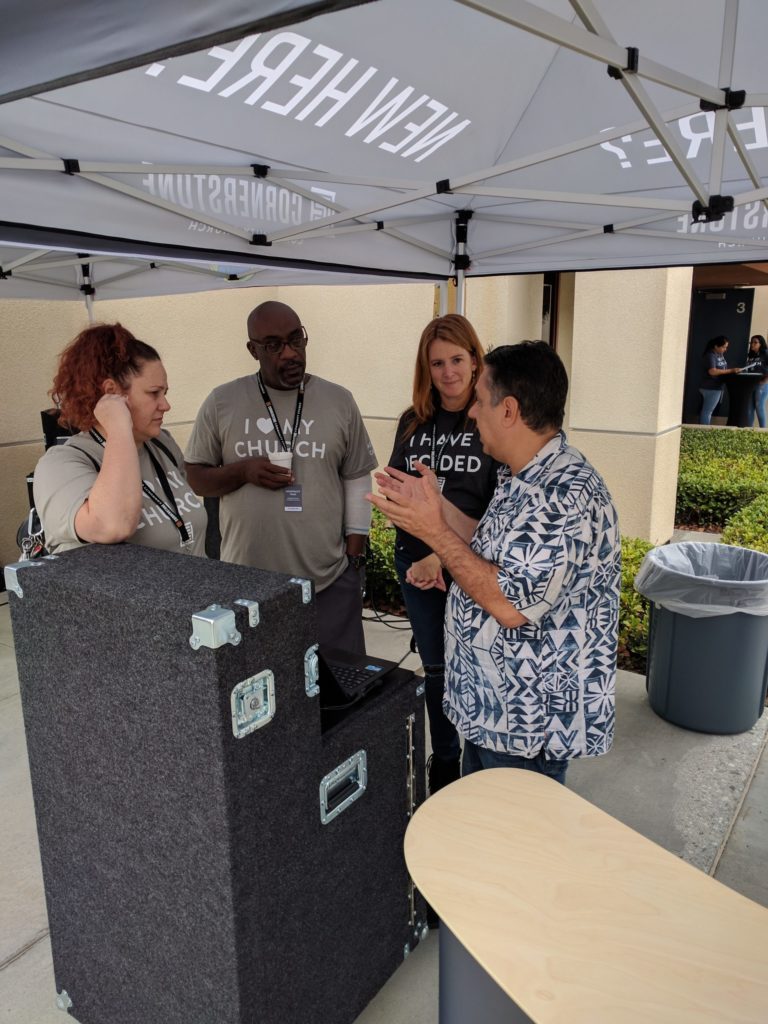
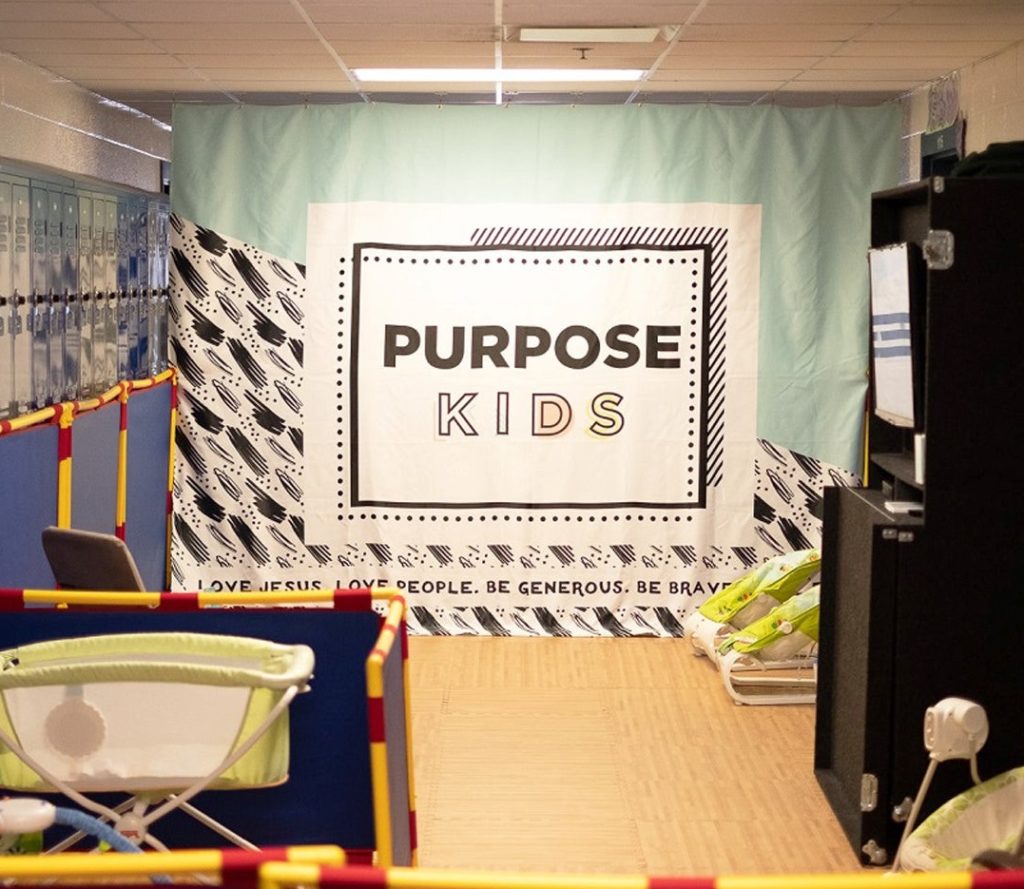
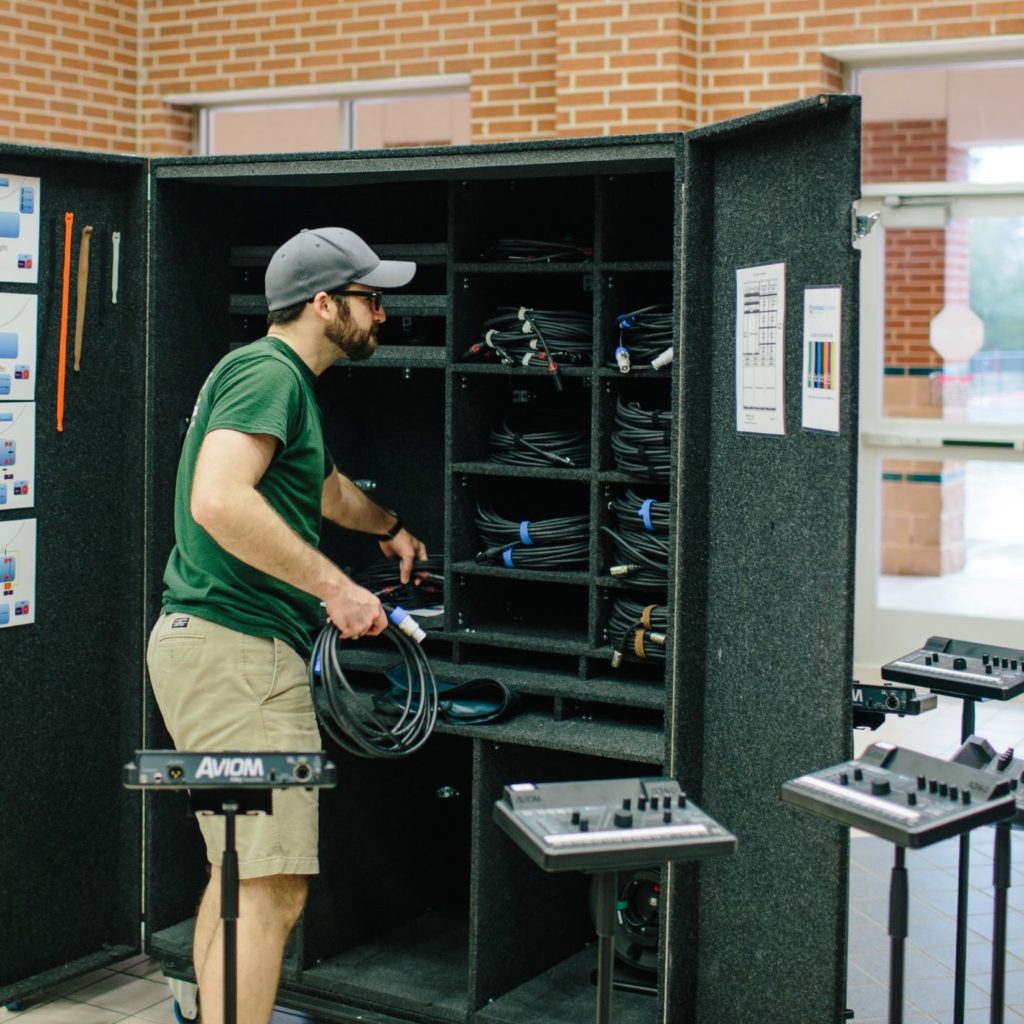



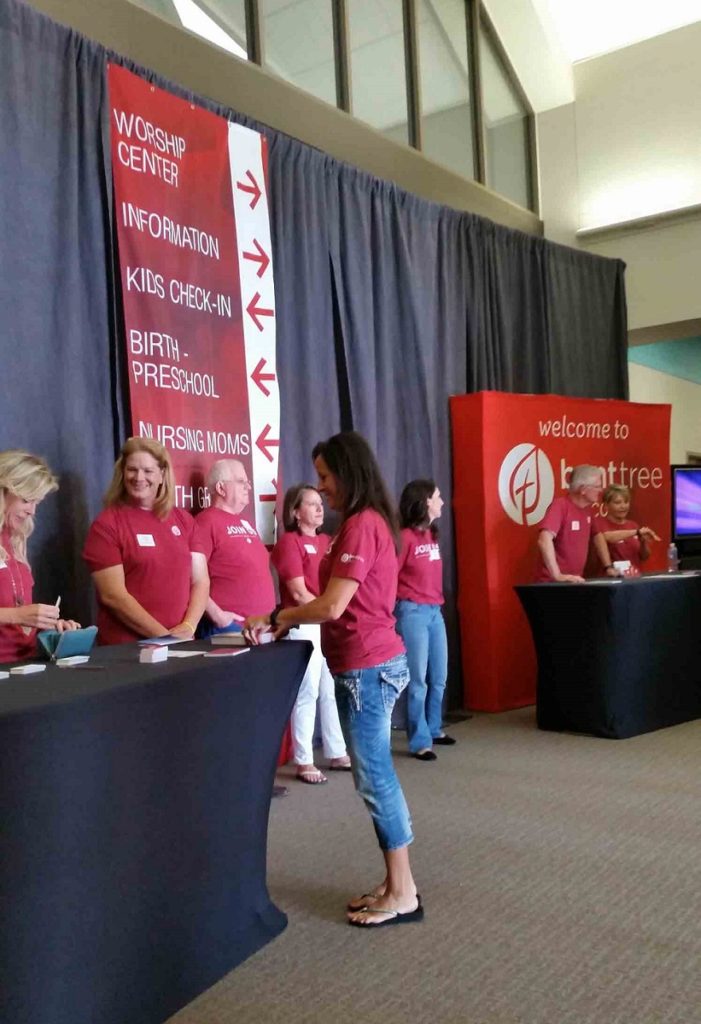
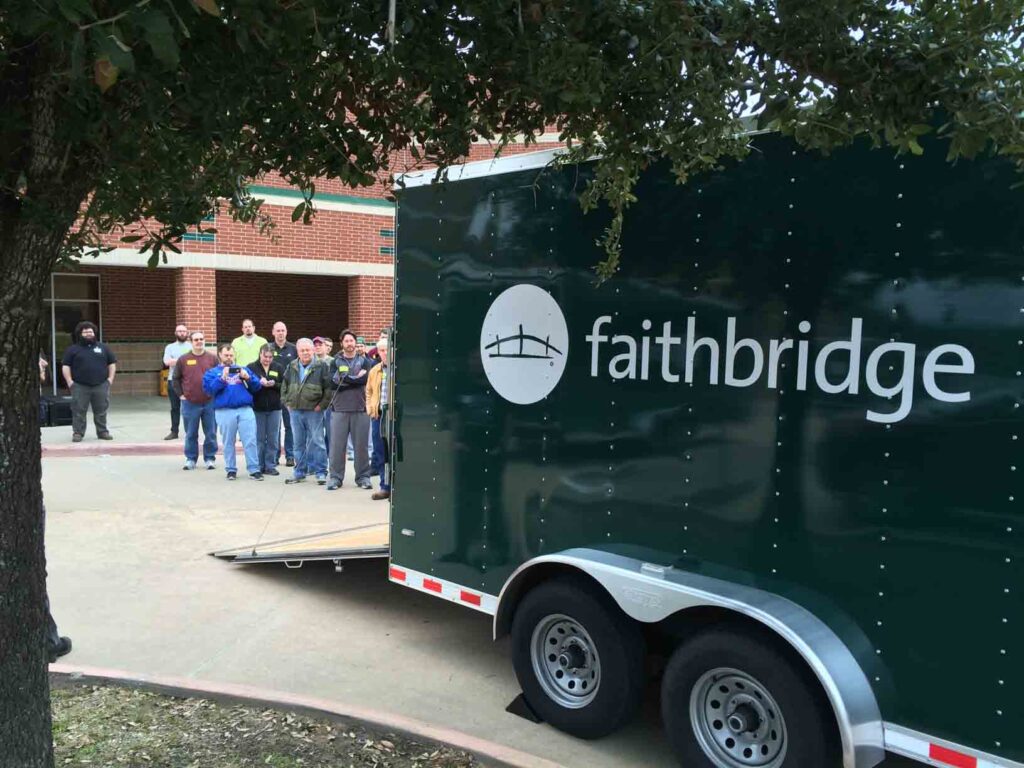


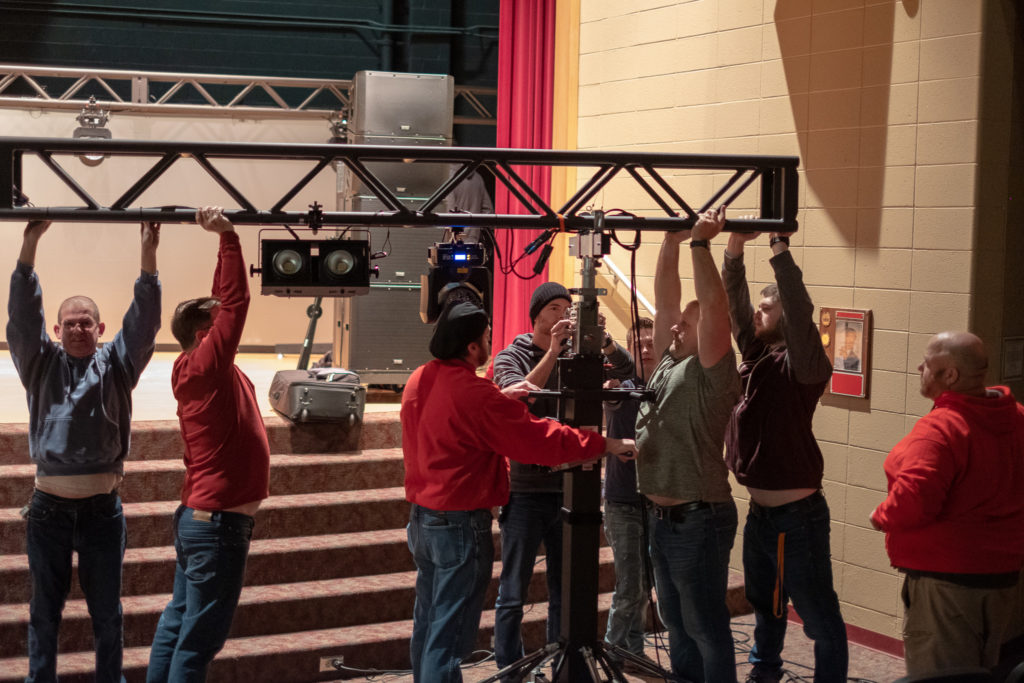
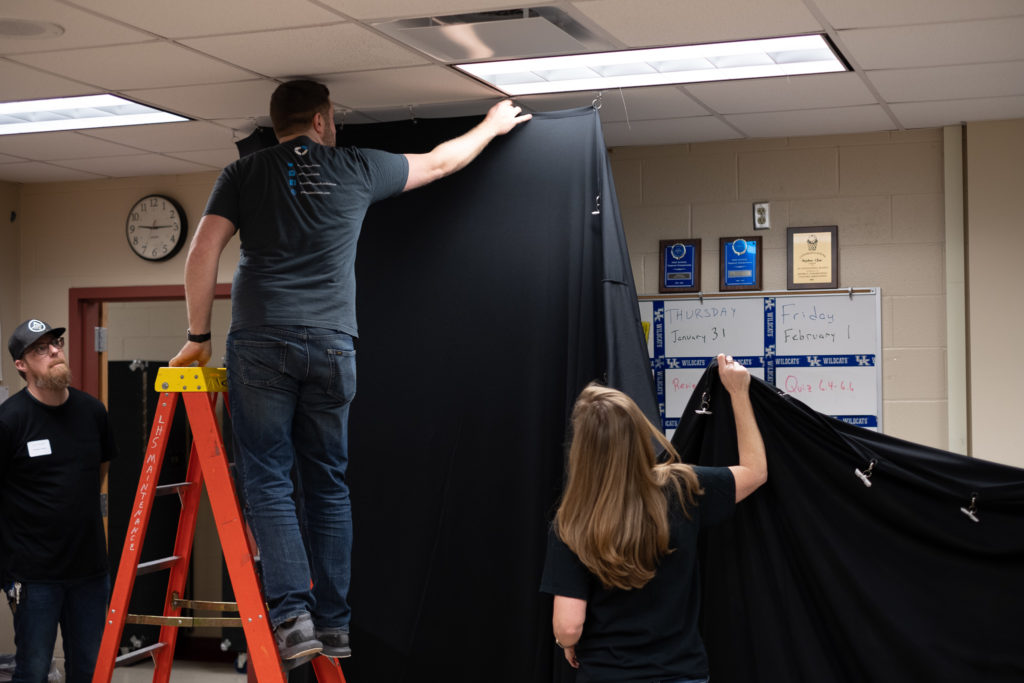






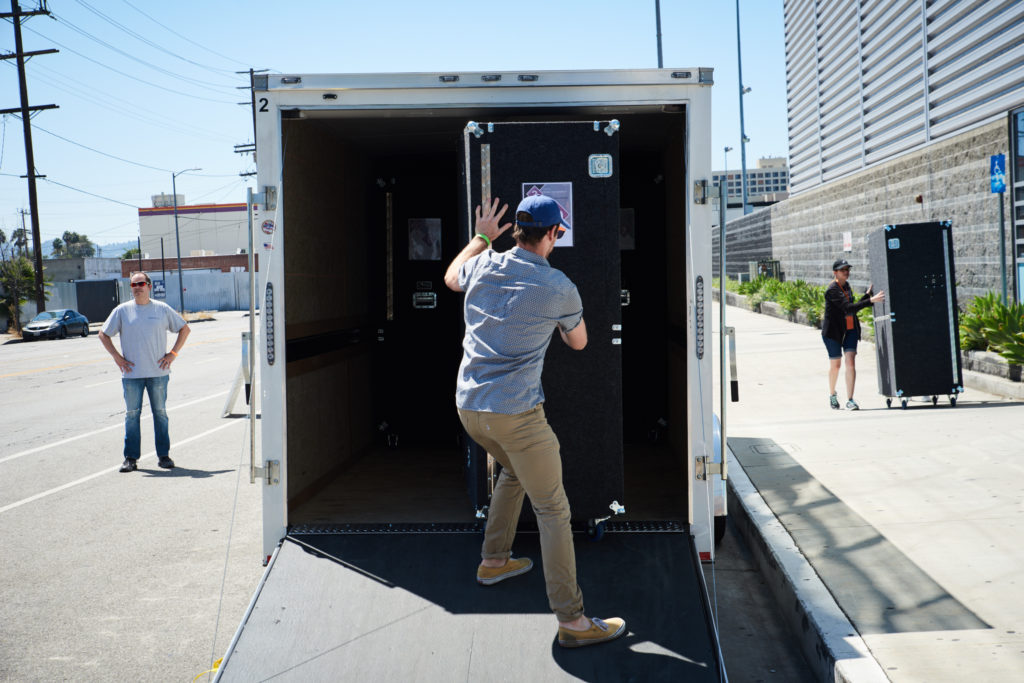
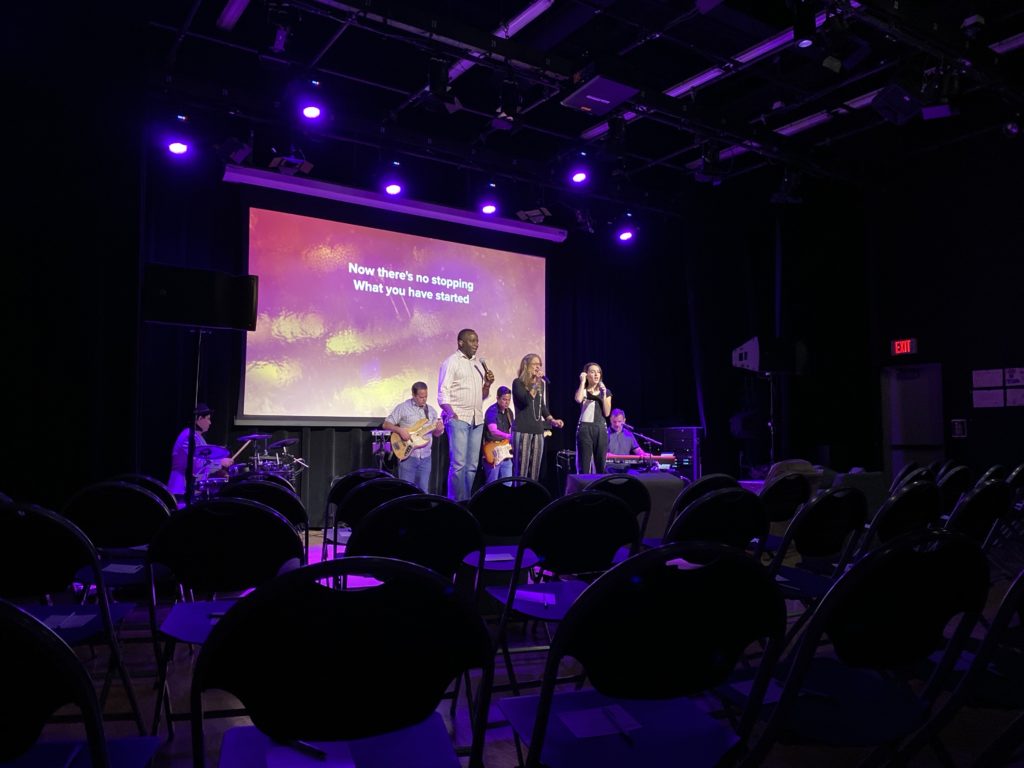
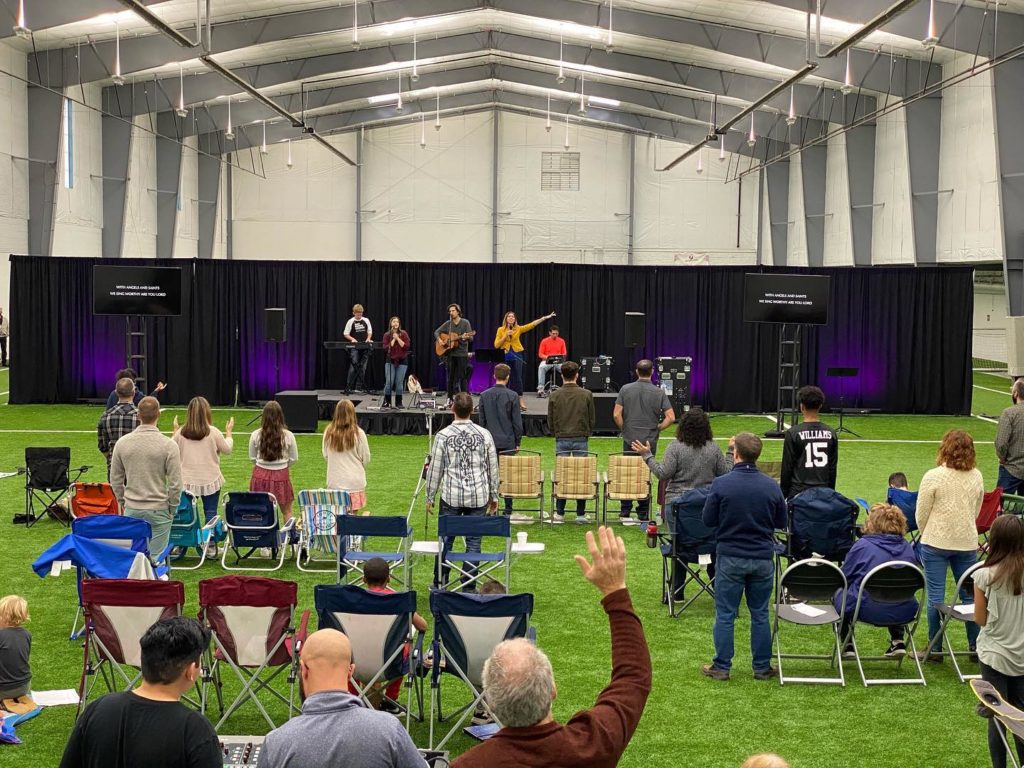

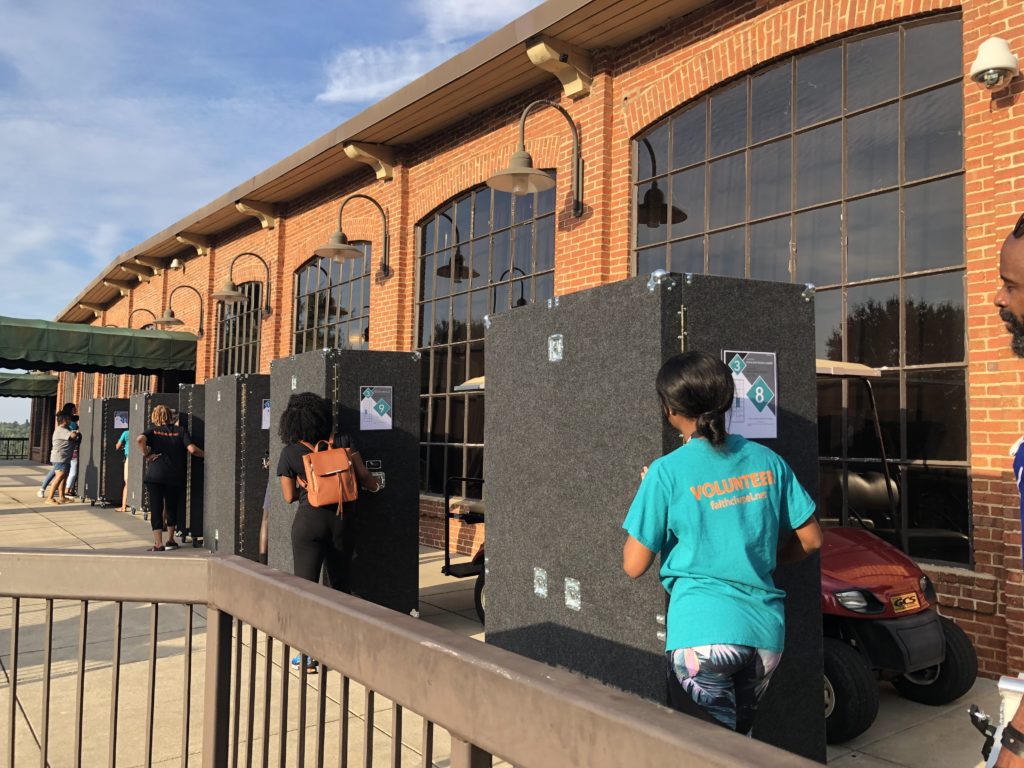
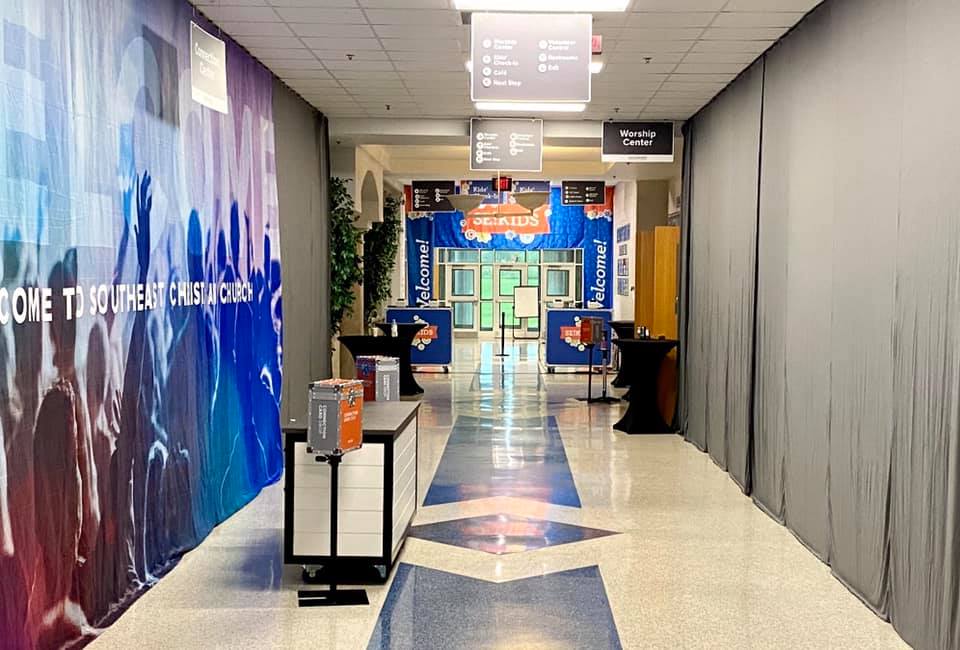
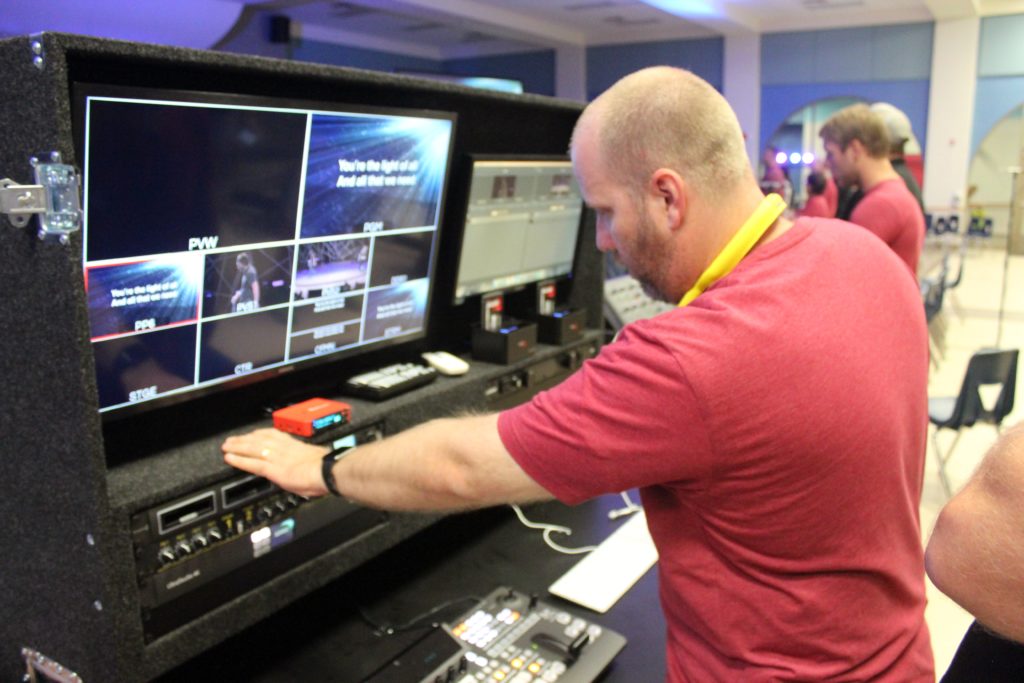
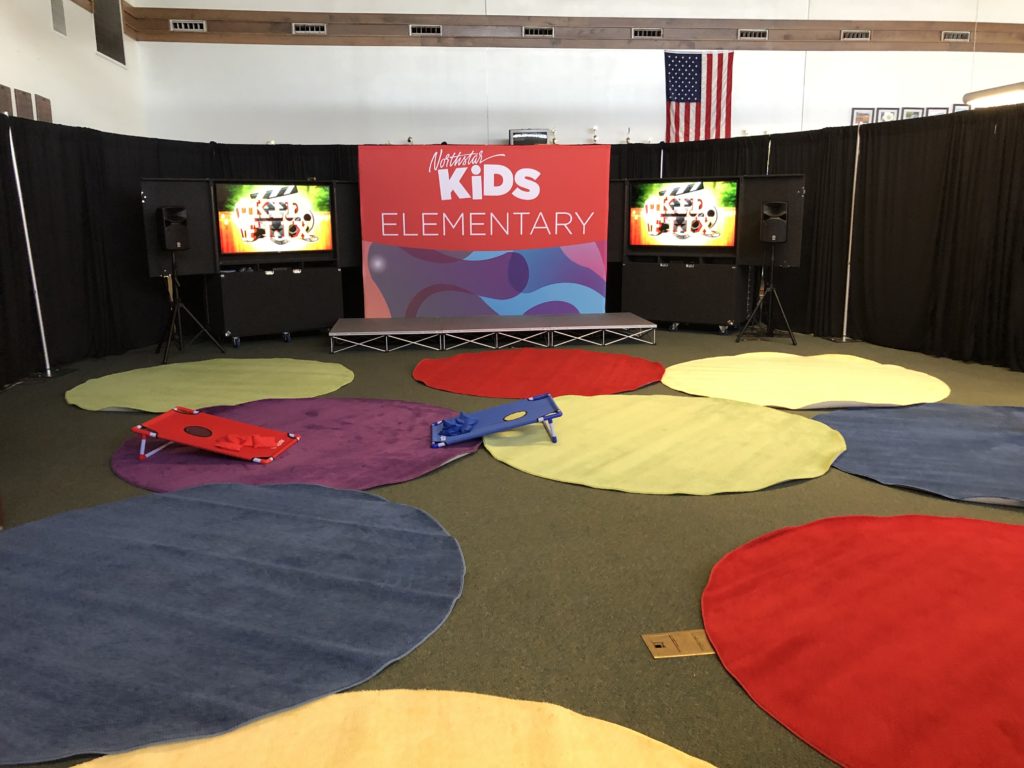









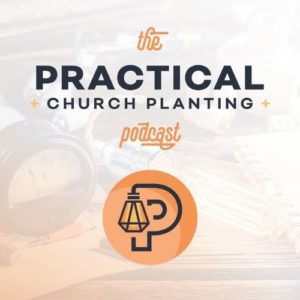














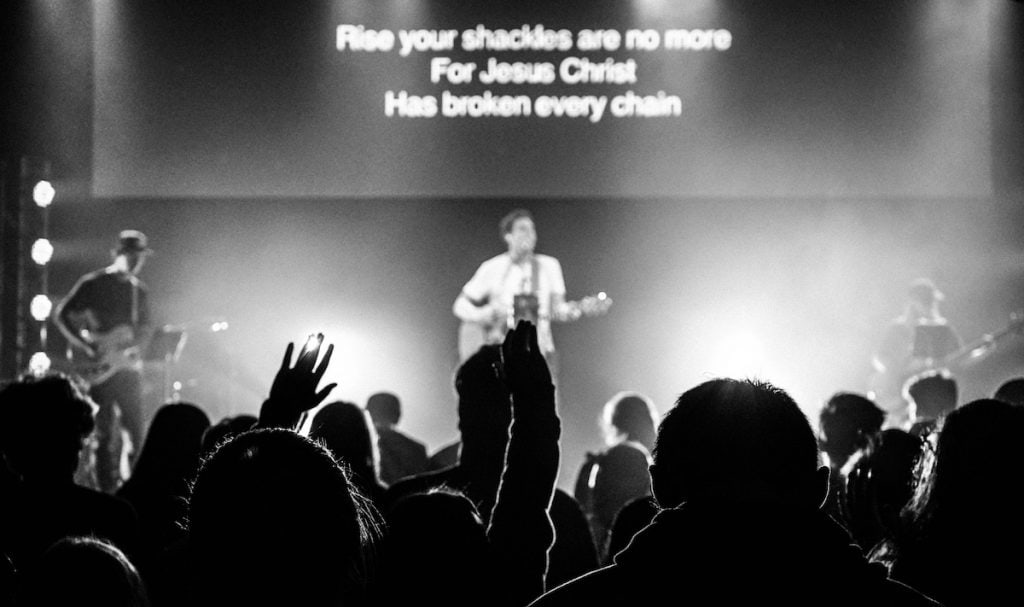
 Portable Church® Industries has developed and refined a Balanced Solution portability design process over the past 20+ years through direct, hands-on launch experience with over 2,500 different portable churches across North America. Our solutions have excellent and welcoming worship, children’s, and community environments that volunteers can set up quickly, efficiently, and with excellence. Volunteers in these churches feel valued, invested in, and more excited to serve. In fact, happy volunteers serve more, give more, and invite others more.
Portable Church® Industries has developed and refined a Balanced Solution portability design process over the past 20+ years through direct, hands-on launch experience with over 2,500 different portable churches across North America. Our solutions have excellent and welcoming worship, children’s, and community environments that volunteers can set up quickly, efficiently, and with excellence. Volunteers in these churches feel valued, invested in, and more excited to serve. In fact, happy volunteers serve more, give more, and invite others more.






























































